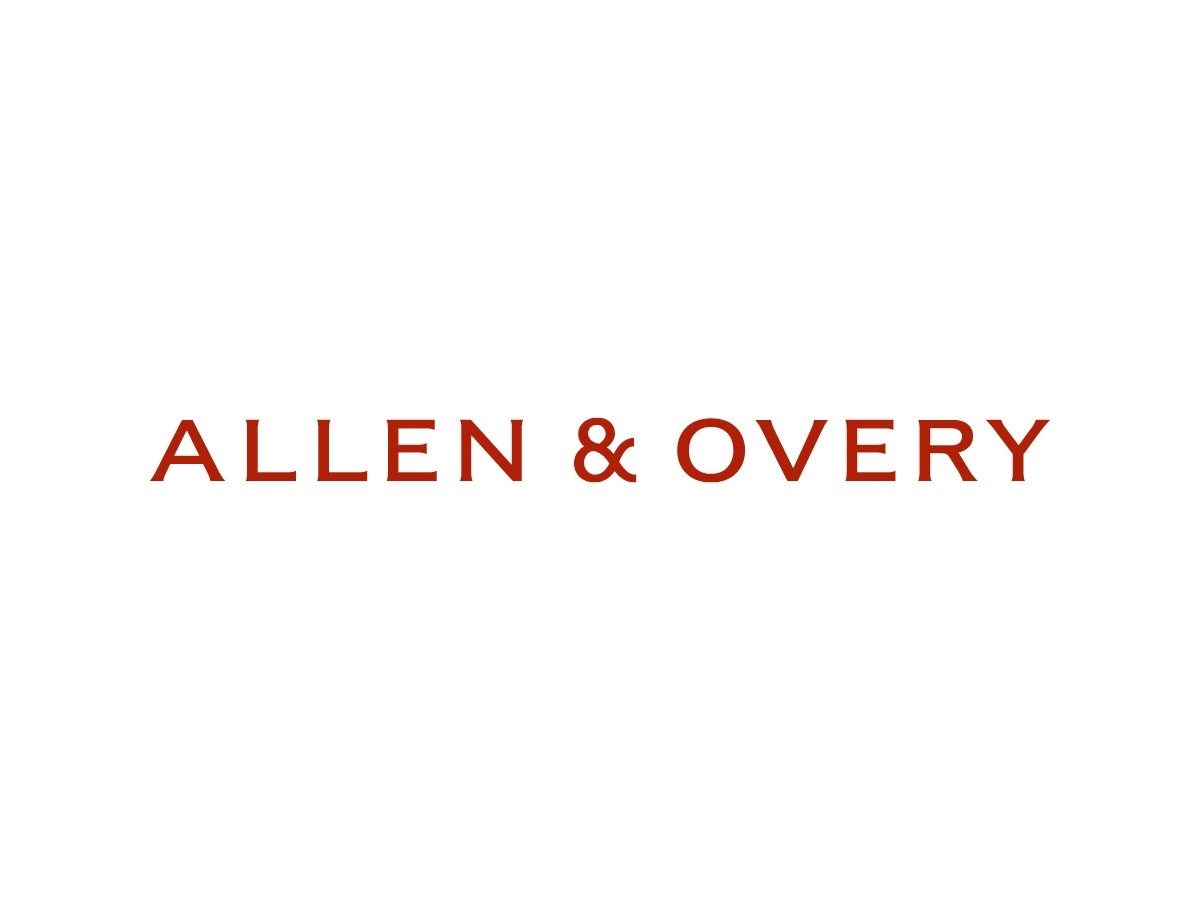District Court Invalidation of Parkinson’s Drug Patent as Obvious Affirmed by Federal Circuit | Allen & Overy LLP
Procedural History
UCB, Inc. v. Actavis Laboratories UT, Inc., is an appeal from a judgment in a Hatch-Waxman suit in the District of Delaware that found the asserted claims of U.S. Patent No. 10,130,589 (the “’589 patent”) invalid for anticipation and obviousness. (Slip Op. at 2-3.) The Federal Circuit affirmed the judgment of invalidity.
Facts
UCB, Inc. (“UCB”) owns the ’589 patent, which is directed to transdermal therapeutic systems (“TTSs”) containing rotigotine and polyvinylpyrrolidone (“PVP”). (Slip Op. at 3-4.) Rotigotine, which is used to treat Parkinson’s disease, can be absorbed through the skin in its amorphous, non-crystalline form as part of a TTS or skin patch. (Id. at 3.) PVP prevents rotigotine from crystallizing by increasing its glass transition temperature and preventing rotigotine molecules from hydrogen bonding. (Id. at 4.)
UCB invented and began marketing Original Neupro® in 2007, a patch for treatment of Parkinson’s disease that contained amorphous rotigotine and PVP, in a weight ratio of 9:2. (Id. at 4.) Original Neupro® is covered by UCB patents, including U.S. Patent Nos. 6,884,434 and 7,413,747 (“the Muller patents”). The ’434 Muller patent teaches a “TTS having rotigotine in an effective amount for treating Parkinson’s disease, with PVP in the range of 1.5% to 5% (w/w),” while the ’747 Muller patent teaches a “TTS with a ratio of 9% rotigotine to 1.5 to 5% PVP by weight.” (Id.) Shortly after Original Neupro® launched in the U.S., a new crystalline form of rotigotine that occurred at room temperature was discovered (“Form II”), resulting in UCB recalling Original Neupro® from U.S. markets in April 2008, and subsequently limiting the product’s use and sale in the market. (Id. at 4-5) In 2012, the FDA approved a new reformulated Neupro®, which has a weight ratio of 9:4 rotigotine to PVP and has improved stability at room temperature compared to original Neupro®. (Id. at 5.) The Muller patents are listed in the Orange Book as covering reformulated Neupro®. (Id.)
Actavis Laboratories UT, Inc. (“Actavis”) submitted an ANDA for approval of a generic version of a transdermal rotigotine patch in 2013. (Id.) UCB sued Actavis for infringement of the ’434 Muller patent1. The district court found the ’434 patent was not invalid and was infringed and granted UCB an injunction, preventing approval of Actavis’s ANDA until March 2021, when the ’434 patent expired. See UCB, Inc. v. Watson Labs., Inc., No. CV 14-1083, 2017 WL 11646645 (D. Del. Nov. 14, 2017), aff’d, 927 F.3d 1272 (Fed. Cir. 2019) (UCB I).
While the UCB I appeal was pending, UCB filed and obtained the ’589 patent. (Slip Op. at 6.) The ’589 patent claims a “TTS having a range of rotigotine to PVP ratios by weight from about 9:4 to about 9:6.” (Id.) UCB sued Actavis again, asserting the ’589 patent2. (Id. at 7.) If successful, UCB would have delayed approval of Actavis’s ANDA by an additional 9 years. (Id.) The district court found that the Muller patents anticipated all asserted claims of the ’589 patent and that the asserted claims were “obvious in view of multiple prior art references, including the Muller patents.” (Id. at 8.)
Holding
The Federal Circuit affirmed the district court’s judgement of invalidity on obviousness grounds but reversed the finding of invalidity based on anticipation.
Anticipation Analysis
The Federal Circuit found that the district court committed legal error by applying the wrong line of cases in its anticipation analysis. (Slip Op. at 8.) Federal Circuit precedent establishes two frameworks for analyzing whether prior art anticipates a claimed range: (1) if the prior art discloses a point within the range, the range is anticipated, or (2) if the prior art discloses a range that overlaps with the claimed range, the claimed range is anticipated if it “describes the claimed range with sufficient specificity such that a reasonable fact finder could conclude that there is no reasonable difference in how the invention operates over the ranges.” (Id. at 9-10.) The district court had applied Kennametal, Inc. v. Ingersoll Cutting Tool Co., 780 F.3d 1376 (Fed. Cir. 2015), and the “immediately envisage” test to treat the Muller patents as point-within-a-range prior art. (Slip Op. at 10-11.) The Court held that this was legal error because, even though the Muller patents indisputably disclosed an overlapping range of ratios, a “disclosure of a range is not a disclosure of endpoints of the range or other discrete points within the range.” (Id. at 11-12.) Accordingly, the district court’s reliance on Kennametal was error.
Obviousness Analysis
The Federal Circuit nevertheless upheld the district court’s invalidity judgment because it found no error in the district court’s obviousness findings. Because the range disclosed in the Muller patents indisputably overlapped with the claimed range of the ’589 patent, Actavis established a prima facie case of obviousness. (Id. at 14.) UCB raised several challenges to the district court’s obviousness findings, each of which were rejected by the Federal Circuit.
First, the Court rejected UCB’s claim that the discovery of Form II changed the state of the art, “rendering all pre-Form II prior art, including the Muller patents irrelevant.” (Id. at 16.) The district court did not clearly err in finding pre-Form II art relevant because of the similarities between Form I and Form II. (Id. at 17.)
Second, the Court rejected UCB’s claim that prior art reference Tang taught away from the claimed range in the ’589 patent because there was no clear error in the district court’s finding that Tang taught an alternative invention and that Tang did “not criticize, discredit, or otherwise dissuade a skilled artisan from investigating the claimed range of ratios.” (Id. at 18-19.) The Court found that Tang merely expressed a preference for a range with a higher PVP percentage but did not teach away from the claimed range. (Id. at 19.)
Third, the Federal Circuit rejected UCB’s arguments that the ’589 patent had unexpected results because Original Neupro®, which fell within the range of the Muller patents, resulted in crystallized rotigotine. (Id. at 20.) The difference in results between the Muller patents and the ’589 patent were a difference in degree because PVP was the most effective crystallization inhibitor, and a person of skill in the art would have expected that an increase in PVP would increase stability of an amorphous drug. (Id. at 21.) The Court refused to reweigh evidence to find the district had clearly erred. (Id. at 24).
Finally, the Court rejected UCB’s challenges to the district court’s finding of no nexus between commercial success of Reformulated Neupro® and the ’589 patent because the Muller patents operated as blocking patents that dissuaded competitors from developing rotigotine TTSs. (Id. at 24-25.) The Federal Circuit specifically found that UCB’s argument that allowing blocking patents to prevent a nexus finding would “effectively brand all co-owned patents ‘blocking’ patents,” unpersuasive, noting that UCB’s expert had failed to analyze whether UCB’s multiple other patents were responsible for Neupro®’s success. (Slip Op. at 26.) Further, the Court found UCB’s claim that the district court’s decision lacked extensive analysis unpersuasive in view of the over 40 pages of factual findings and conclusions of law issued by the district court. (Slip Op. at 28.)
Key Takeaways
- The Federal Circuit views the Kennametal decision as not applicable to anticipation cases based on overlapping ranges but, instead, limited to where a reference even if it “does not expressly spell out” all the limitations arranged or combined as in the claim, if a person of skill in the art, reading the reference, would “at once envisage” the claimed arrangement or combination.
- Patent owners that own potentially blocking patents should make sure to present evidence as to why those patents are responsible for a product’s commercial success.
- Where possible, patent owners should focus teach away arguments on prior art passages explicitly criticizing elements of the claimed invention.
Footnotes
1 UCB also asserted another patent, U.S. Patent No. 8,232,414. (Slip Op. at 5.)
2 UCB also sued Mylan Technologies, Inc., but the parties stipulated to adopt the judgment, opinion, and trial record from the case against Actavis. See UCB, Inc. v. Mylan Techs., Inc., No. 2:19-cv-128, 2020 WL 2300359 (D. Vt. May 8, 2020); (Slip Op. at 8).






